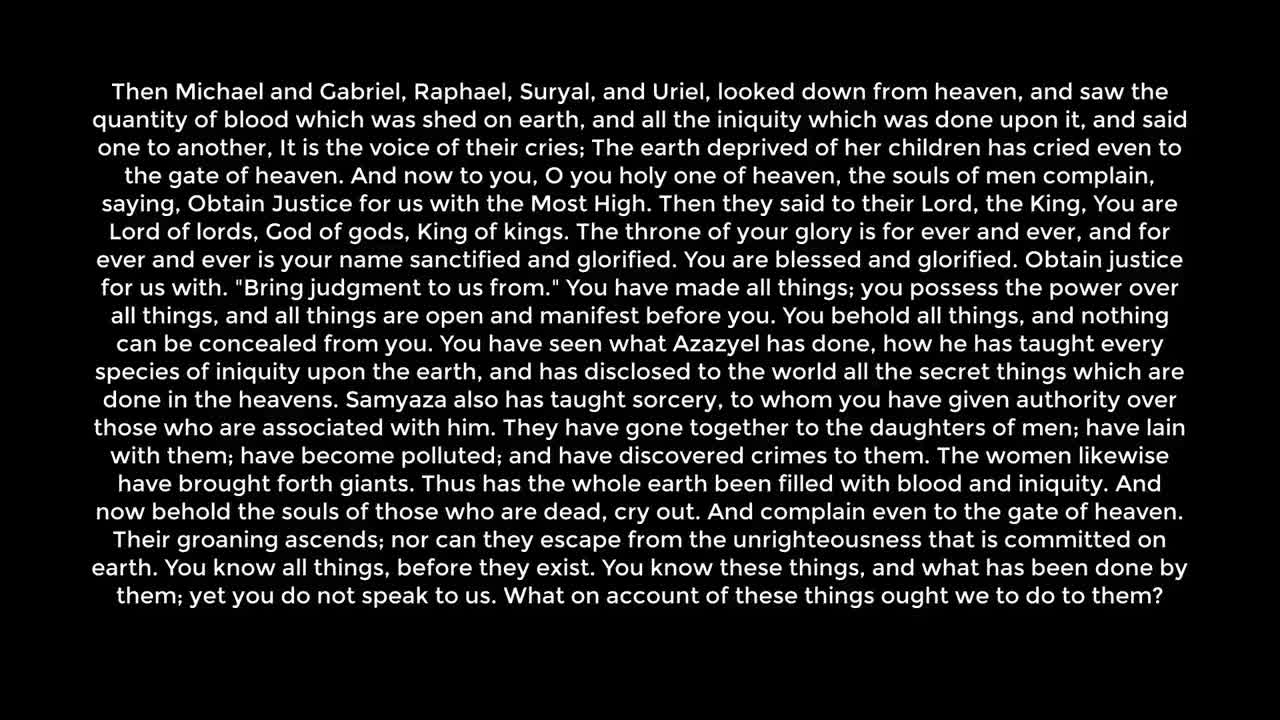Premium Only Content

MYSTERY, BABYLON THE GREAT - Nephilim
The city of Babylon was the capital of the ancient land of Babylonia in southern Mesopotamia. It was situated on the Euphrates River about 50 miles south of modern Baghdad, just north of what is now the modern Iraqi town of al-Hillah.
The tremendous wealth and power of this city, along with its monumental size and appearance, were certainly considered a Biblical myth, that is, until its foundations were unearthed and its riches substantiated during the 19th century. Archaeologists stood in awe as their discoveries revealed that certain stories in the Bible were an actual situation that had happened in time.
A quick overview of the writings of the prophet Isaiah in the Bible, especially chapter 13, reveals some predictions concerning Babylon that stagger the imagination.
The Word "Babylon"
Babylon is Akkadian "babilani" which means "the Gate of God(s)" and it became the capital of the land of Babylonia. The etymology of the name Babel in the Bible means "confused" (Gen 11:9) and throughout the Bible, Babylon was a symbol of the confusion caused by godlessness. The name Babylon is the Greek form of the Hebrew name Babel.
The Location of Babylon
Babylon lies in the land of Shinar as revealed in the Bible (Gen 10:10) and its general location has never been disputed. See Geography
The Tower of Babel
The Bible reveals that all false systems of religion began in the land of Babylon and will have their consummation from the spirit of Babylon in the last days. It is interesting to note that every organized system of religion in the world today has traces of ancient Babylon. The Bible records in Genesis 10:10, that, after the great flood, all men spoke one common language and a man named Nimrod built a city and established a common religion. Nimrod was a descendant of Noah’s son, Ham. Genesis 11:1-9 describes the building of the city and its famous tower "whose top may reach unto heaven." It also records how God came down and punished the people’s arrogance by creating a confusion of different languages and possibly their racial distinctions. This way man would be forced to obey God’s original command to "be fruitful and fill the whole earth." It is interesting that the materials used to build the Tower of Babel were the same as those employed for the construction of the great ziggurat of Babylon and similar ziggurats, according to ancient building inscriptions.
The Early Growth of Babylon
There is evidence that man has lived in this area of Mesopotamia since the beginning of civilization. The first records indicate that Babylon was established as a city around the 23rd century BC. Before this, it was a provincial capital ruled by the kings of the city of Ur. Then came the migration of the Amorites.
Quick Overview of Babylonian History
Babylonia (pronounced babilahnia) was an ancient empire that existed in the Near East in southern Mesopotamia between the Tigris and the Euphrates Rivers. Throughout much of their history, their main rival for supremacy was their neighbors, the Assyrians. It was the Babylonians, under King Nebuchadnezzar II, who destroyed Jerusalem, the capital of the Kingdom of Judah, and carried God’s covenant people into captivity in 587 BC.
The Bible reveals much about the Babylonians all the way back from the time of Hammurapi (2000 BC) to the fall of Babylon (about 500 BC). Throughout the Old Testament, there are references to the Babylonians, their people, culture, religion, military power, etc.
Babylonia was a long, narrow country about 40 miles wide at its widest point and has an area of about 8,000 square miles. It was bordered on the north by Assyria, on the east by Elam, on the south and west by the Arabian desert, and on the southeast by the Persian Gulf.
The earliest known inhabitants of Mesopotamia were the Sumerians, whom the Bible refers to as the people of the "land of Shinar" (Gen 10:10). Sargon, from one of the Sumerian cities, united the people of Babylonia under his rule about 2300 B.C. Many scholars believe that Sargon might have been the same person as Nimrod (Gen 10:8).
Around 2000 BC Hammurapi emerged as the ruler of Babylonia. He expanded the borders of the Empire and organized its laws into a written system, also known as the Code of Hammurapi. About this time Abraham left Ur, an ancient city located in lower Babylon, and moved to Haran, a city in the north. Later, Abraham left Haran and migrated into the land of Canaan under God's promise that he would become the father of a great nation (Gen 12).
Alongside of Babylonia, there must also be a mention of Assyria, which bordered Babylonia on the north. Assyria's development was often intertwined with the course of Babylonian history. About 1270 BC, the Assyrians overpowered Babylonia. For the next 700 years, Babylonia was a lesser power as the Assyrians dominated the ancient world.
-
 2:52
2:52
WFTX
4 years agoChristmas card mystery
270 -
 0:38
0:38
TwistedTalonNailArt
4 years ago $0.02 earnedMystery Halloween Launch!
155 -
 11:06
11:06
This Is Aubz
4 years agoMystery Bag Thursday!
61 -
 0:08
0:08
SarahCharlieBrooke
4 years ago $0.09 earnedMore Mystery Cat
1.2K -
 11:39
11:39
The Kaz
4 years agoNickelodeon Mystery Minis
91 -
 0:53
0:53
Joslyn Chase Video
4 years ago $0.03 earnedA holiday mystery!
152 -
 0:14
0:14
OutdoorLife
4 years ago $0.14 earnedGreat Pyrenees
1.31K1 -
 6:35:59
6:35:59
SpartakusLIVE
7 hours ago#1 Monday MOTIVATOR || Charity Stream Wednesday, The Gauntlet SOON, and 2v2s RETURN?!?!
45.6K -
 2:58:23
2:58:23
TimcastIRL
6 hours agoBiden Pardons WERE FAKE, NYT Report PROVES Trump WAS RIGHT, Fauci Faces Charges | Timcast IRL
250K88 -
 8:01
8:01
MattMorseTV
11 hours ago $5.66 earnedTrump just DROPPED a BOMBSHELL.
42.8K52